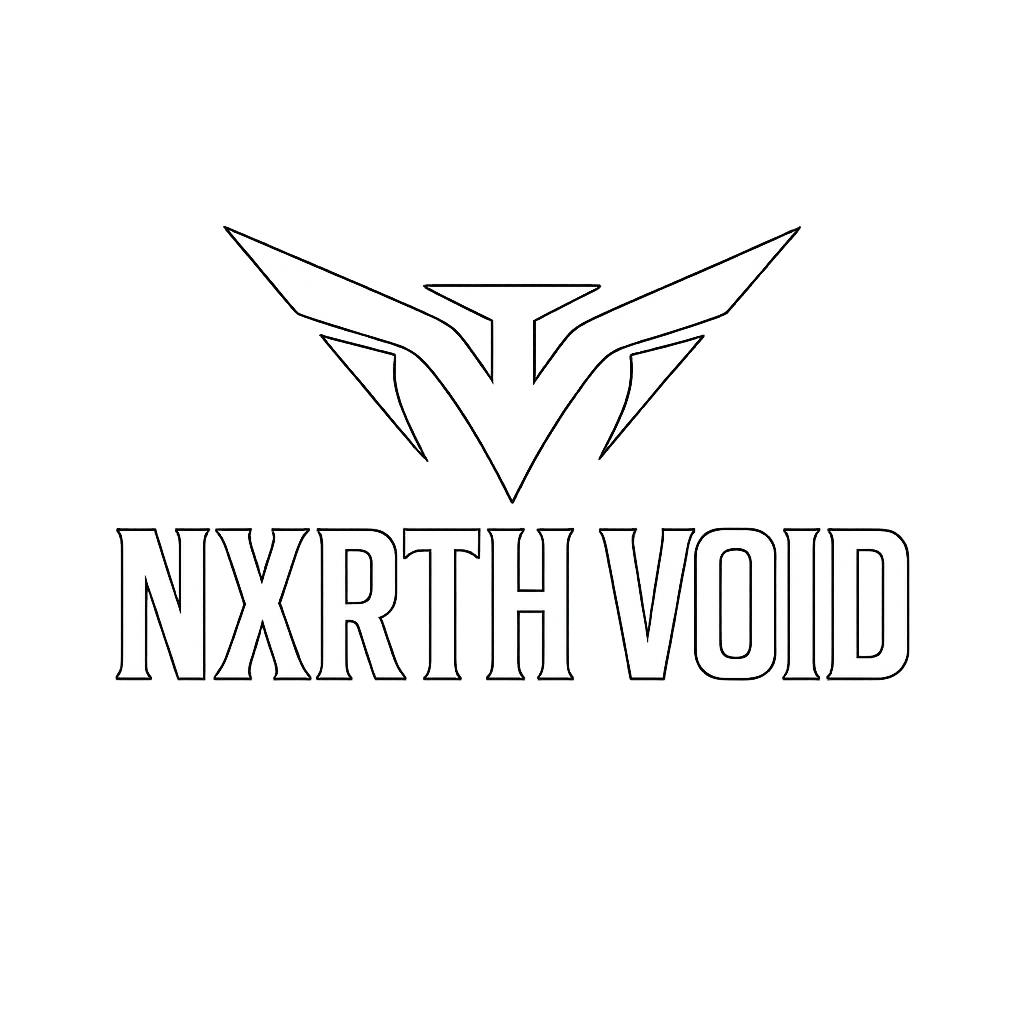DESIGN PHILOSOPHY

At NXRTH VOID, design is not merely aesthetic—it's philosophical. Our approach to design embodies our broader worldview, creating objects that are both functional artifacts and carriers of meaning.
PRINCIPLES OF VOID DESIGN
Our design philosophy is built on several core principles that guide all our creative decisions, from product development to visual communication to spatial design.
MEANINGFUL MINIMALISM
We practice minimalism not as an aesthetic trend but as a meaningful approach to design. We remove the unnecessary to emphasize what matters—creating space for contemplation and focusing attention on essential elements. Every detail serves a purpose; nothing is arbitrary.
TENSION & BALANCE
Our designs explore the tension between opposing forces: structure and chaos, presence and absence, digital and analog, mechanical and organic. We find creative energy in these contradictions and seek to balance them rather than resolve them.
HONESTY OF MATERIALS
We respect the inherent qualities of materials and processes, allowing them to speak for themselves rather than disguising or overworking them. This honesty extends to our communication—we present our products as they are, without exaggeration or embellishment.
TIMELESSNESS THROUGH SPECIFICITY
Rather than chasing universal appeal through generic design, we achieve timelessness through specificity—creating objects with a clear point of view that transcend trends precisely because they don't follow them. Our designs are of their time but not limited by it.
VISUAL LANGUAGE
Our visual language is distinctive and instantly recognizable, characterized by several key elements that appear across all our design work.
MONOCHROME PALETTE
We work primarily in black and white, with occasional use of grayscale. This restriction is not a limitation but a focusing mechanism—by removing color, we emphasize form, texture, proportion, and contrast. The absence of color creates space for contemplation and allows other design elements to come forward.
TYPOGRAPHY AS ARCHITECTURE
Typography is central to our visual identity. We use custom typefaces that balance mechanical precision with subtle human imperfection. Our typographic approach treats letters as architectural elements—building blocks that create rhythm, hierarchy, and spatial relationships on the page or screen.
We often incorporate typographic distortions and glitches that reference digital systems under stress—a visual metaphor for the breakdown of conventional structures that allows new meanings to emerge.
NEGATIVE SPACE
Negative space—the void itself—is perhaps our most important design element. We use emptiness deliberately, allowing it to create rhythm, focus attention, and provide room for interpretation. Our layouts typically feature generous white space that gives content room to breathe and creates a sense of calm amid the visual noise of contemporary culture.
GRID SYSTEMS & THEIR DISRUPTION
We work with rigorous grid systems that provide structure and coherence to our designs. However, we deliberately disrupt these systems at strategic points—creating tension between order and chaos that reflects our broader philosophical interests. These disruptions often take the form of glitches, breaks, or unexpected alignments that challenge the viewer's expectations.
DESIGN INFLUENCES
Our design approach draws inspiration from various movements and disciplines:
- Brutalist Architecture: The honesty of materials, bold forms, and uncompromising vision
- Japanese Minimalism: The concept of ma (negative space) and the beauty of absence
- Swiss Typography: Clarity, precision, and systematic thinking
- Industrial Design: Functionality, durability, and the aesthetics of utility
- Digital Glitch Art: The beauty of system failure and unexpected outcomes
- Cyberpunk Aesthetics: The tension between technology and humanity, the digital and the physical
PRODUCT DESIGN APPROACH
Our approach to product design—particularly our garments—applies these broader principles to the specific challenges of creating objects that exist in physical space and interact with the human body.
FORM & FUNCTION
We reject the false dichotomy between form and function. In our view, the aesthetic qualities of an object are inseparable from its functional qualities—how something looks affects how it's used, and how something is used should inform how it looks. We design products that perform their intended function beautifully while expressing our aesthetic values.
MATERIAL SELECTION
We select materials based on their intrinsic qualities—how they feel, how they age, how they perform—as well as their environmental impact. We prefer materials that develop character over time, recording the history of their use rather than deteriorating. This approach creates products that become more personal and valuable with age.
CONSTRUCTION & DETAIL
The quality of construction is paramount in our products. We work with skilled craftspeople who share our commitment to excellence and attention to detail. Our garments feature thoughtful construction details that enhance both functionality and aesthetic appeal—reinforced stress points, considered seam placement, and clean finishing techniques.
We often incorporate subtle design details that are discoverable over time rather than immediately apparent—hidden pockets, unexpected textures, or carefully placed graphics that reveal themselves through use. These elements create a sense of discovery and reward close attention.
DESIGN PROCESS
Our design process is methodical yet open to intuition and unexpected outcomes. We begin with extensive research and conceptual development, exploring ideas through writing, sketching, and material experimentation. We then develop prototypes that are rigorously tested and refined before moving to production.
Throughout this process, we maintain a critical perspective, questioning our assumptions and challenging ourselves to find the most elegant solutions. We embrace constraints—whether material, technical, or economic—as creative catalysts rather than limitations.
We also incorporate feedback from our community, recognizing that design is ultimately about creating objects and experiences that resonate with people. However, we balance this responsiveness with a clear vision and point of view—we listen to feedback but maintain the integrity of our design philosophy.
